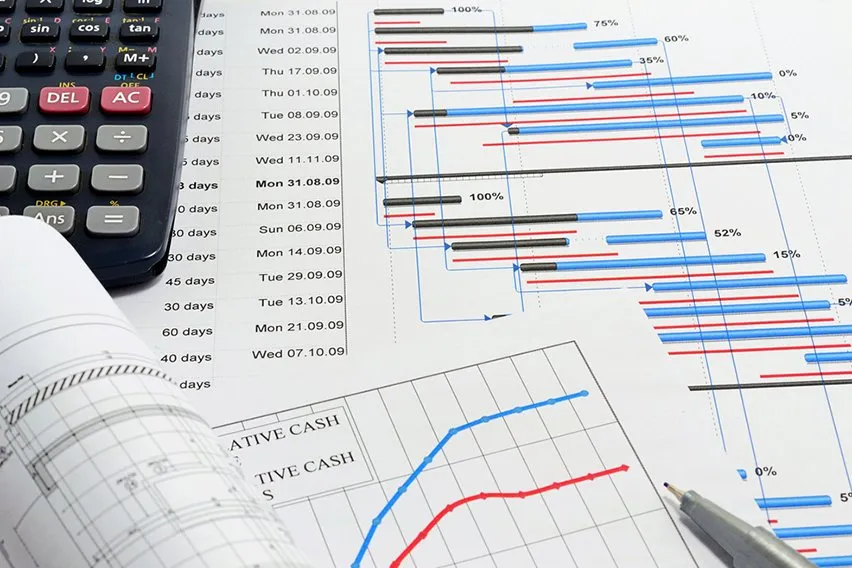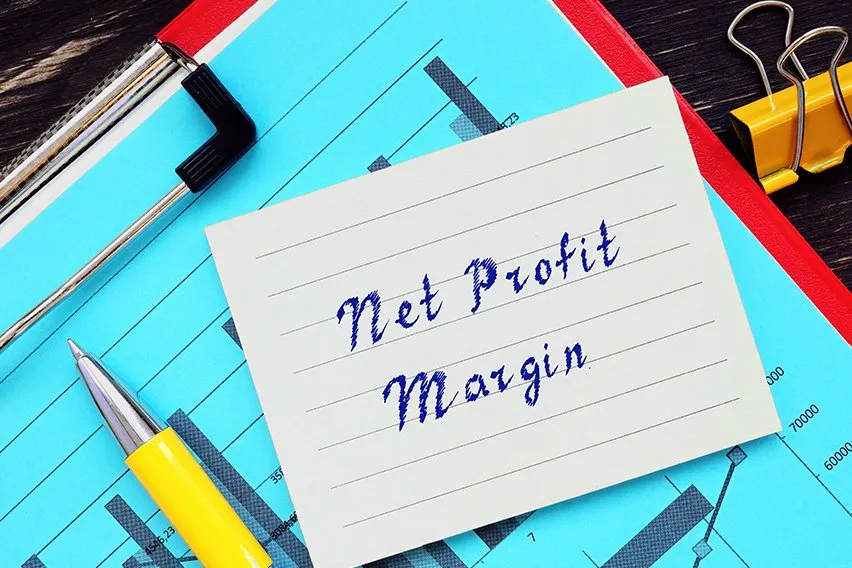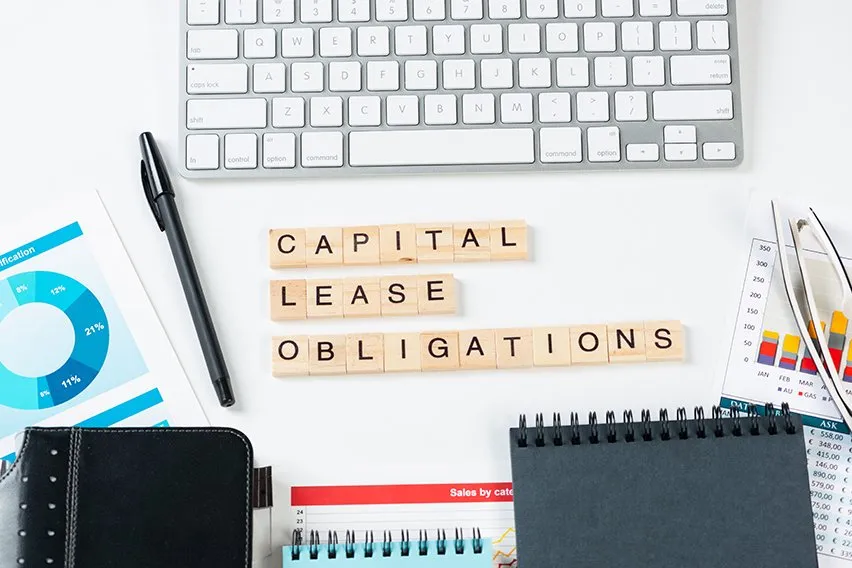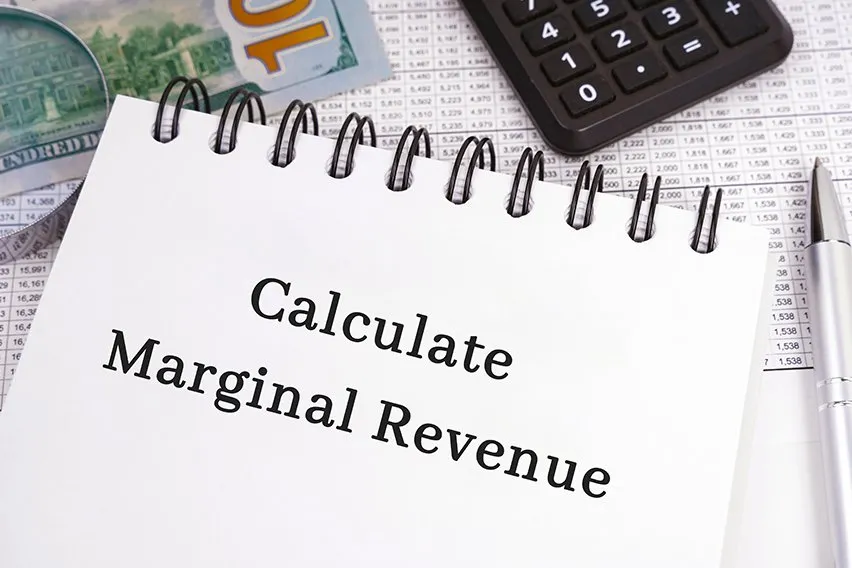How to Create a Cash Flow Projection

One of the most important things to being a small business owner is understanding your financial health. It can sometimes be easy to assume that if your business is healthy now that it will continue to be healthy down the road. But can you predict the future? Do you know exactly what’s going to happen?
Staying on top of and monitoring your business’s cash flow can have a ton of benefits for your overall operations. You can help prevent issues in the future by understanding how to run an accurate cash flow projection.
But why is this important? Because several small businesses fail due to having cash flow problems. So, understanding cash flow projections and predicting cash flow performance is incredibly valuable. Let’s take a closer look at how to create a cash flow projection for your business.
Here’s What We’ll Cover:
What Is a Cash Flow Projection?
How to Create a Cash Flow Projection
Why Is Cash Flow Projection Important for Your Business?
What Are the Benefits of a Cash Flow Projection?
What Is a Cash Flow Projection?
How much money does your business have coming in? How much money does your business have going out? A cash flow projection can help you predict how much money will enter and leave your business. It’s a way to help anticipate how your business is going to perform in the future.
Cash flow is basically the net amount of cash or cash equivalents that your business has transferring in and out. The transfer of this cash happens through your accounts receivable and accounts payable.
Think of it this way:
- Accounts receivable is the money that your business has coming in
- Accounts payable is the money that your business has going out

How to Create a Cash Flow Projection
It’s worth your time as a small business owner to understand your cash flow. It doesn’t just help with a cash flow projection, but it also allows you to identify areas for improvement. Plus, it lets you find new opportunities and potential shortfalls or risks. You can use the steps outlined below to perform a year-long cash flow projection or a month-by-month projection.
1. Estimate Your Business Sales
The first thing that you’re going to do when setting up your cash flow projection is figuring out your business sales. You can do this by looking at data from the previous year to predict the amount of cash that could enter your business. You can find all your business’s cash sales and credit cases in your income statements.
2. Calculate When You Will Get Paid Based on the Terms
This step is for business owners who offer their customers a credit line, issue invoices or receive multiple payments in a single sale. The overall idea is for you to estimate when you’re actually going to receive cash from the sales that you make.
To do this, start by calculating any days sales outstanding, or DSO. Just divide your monthly accounts receivable by total sales. Then, multiply the number you get by the number of days in that month. It would look like this:
(Monthly accounts receivable / total sales) x days in the month = DSO
This will let you know the average number of days it takes for you to receive a payment from your customers. You can then use this number with your estimates.
3. Determine Any Fixed and Variable Expenses
The next step you’re going to take is estimating your fixed and variable expenses by month. Fixed expenses aren’t going to change, and they can include things like employee salaries, insurance and rent, among others.
Variable expenses, on the other hand, are going to fluctuate with your sales. For example, shipping costs are going to change and vary depending on the number of products you sell and have to ship. Other things like packaging, labour costs and raw materials will also fluctuate in price depending on sales volume.
You are going to need to estimate fixed and variable expenses the same way you did with your sales, for each month of the following year. One of the simplest ways to do this is by using a spreadsheet that breaks down all your fixed and variable expenses. But, having a professional accountant to handle this might be the best resource you can use.
4. Compile Everything Together
You have done the research, found the data and calculated the numbers you’re going to need for your cash flow projection. Now, you just need to put them all together.
Start with your cash balance from the previous month of operation. Then, take that number and add this month’s projected receipts making sure to account for days sales outstanding. Finally, you can then subtract any projected expenses you calculated.
The formula would look like this:
(Previous month’s cash balance + current month’s projected receipts) – projected expenses = your current month’s projected cash flow
Once you have that calculation you can then start to do a cash flow projection for the following months. All you need to do is carry whatever balance you have from the current month’s projected cash flow to the following month. You can then repeat the steps outlined above to determine the next 12 months of cash flow.
It can be overwhelming trying to collect, analyze and calculate all this data if accounting and finances aren’t your specialties. If this is the case, using a cash flow template can be extremely helpful to make sure you do everything correctly and accurately.
Why Is Cash Flow Projection Important for Your Business?
It was mentioned above, but just because you know your business’s financial health today doesn’t mean you know what it will be in the future. One of the most common mistakes small business owners make is gauging their financial health based on their assets. These could include things like equipment, machinery or intellectual property, to name a few.
And while your assets are important to your business, they aren’t going to help you determine or predict your future business performance. Plus, assets aren’t factored into your cash flow projections.
Understanding cash flow and running regular projections can help you guide your business in the right direction. Instead of using present circumstances to figure out where you’re going, you will use historical data which can be more accurate.

What Are the Benefits of a Cash Flow Projection?
It might vary depending on the type of business that you operate, but there can be several benefits to conducting a cash flow projection. You can make better business decisions, identify issues before they happen and understand where all your money goes.
Make Better Business Decisions
Knowing and understanding how your business is going to perform in the future can help you make better business decisions. Since you have actual cash flow data, you can make those business decisions with much more confidence. For example, your business might currently have a negative cash flow. However, you might not need to hold off on potential investments since the coming months look positive.
Identify Issues Before They Happen
You can’t necessarily predict the future with one hundred percent certainty. But, cash flow projections will help you prepare for and identify any issues before they happen. For example, if your business is regularly cash flow positive you might move some funds around, such as into an emergency fund.
So, if any issues arise unexpectedly then you are going to have a nice cushion to avoid and prevent negative cash flow.
Understand Where Your Money Is Going
Having cash on hand doesn’t typically last too long for small businesses. You are going to have to pay bills and other expenses. And there can be unexpected emergencies where you need to use your business’s cash balance, which can slow business growth. This is why understanding where your money is going will let you make necessary adjustments where needed.
Plus, a cash flow analysis can help you figure out why you’re seeing a negative cash flow and any consistent causes. It will also allow you to identify the moments where you have enough cash to invest or spend on business purchases.
Key Takeaways
If you’re not an accountant or a bookkeeper, conducting cash flow projections might seem overwhelming and confusing. But the truth is a cash flow projection is pretty straightforward for you to do, you just need to make a few calculations. Plus, cash flow planning is beneficial for you to understand the financial health of your business and have a positive cash flow.
It can be helpful to conduct a detailed cash flow projection at least once a year to understand where your business sits and stay on top of changes. This will allow you to stay in tune with your business operations and guide it in the direction you want it to go.
To create a cash flow projection, you just need a few details. First, you need to find the cash balance your business had for the previous month. You will then add that number to your current month’s projected receipts. Finally, you take that number and subtract your projected expenses.
The formula for cash flow calculations would look like this:
(Previous month’s cash balance + current month’s projected receipts) – projected expenses = your current month’s projected cash flow
Did you enjoy reading this guide? Head on over to our resource hub for more great content!
RELATED ARTICLES

 What Is Net Revenue? Definition & Formula
What Is Net Revenue? Definition & Formula Net Profit Margin: Definition, Example & Calculation
Net Profit Margin: Definition, Example & Calculation Operating Income: What Is It?
Operating Income: What Is It? Capital Lease Vs Operating Lease: What’s the Difference?
Capital Lease Vs Operating Lease: What’s the Difference? What Is Payroll Remittance & Deduction?
What Is Payroll Remittance & Deduction? Learn How to Calculate Marginal Revenue
Learn How to Calculate Marginal Revenue